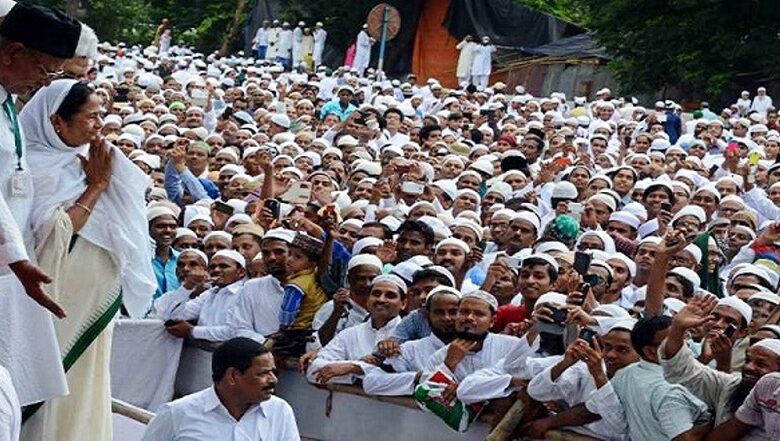Assessing the Socioeconomic Landscape of Muslims in West Bengal: A Critical Inquiry into the TMC Rule

News Mania / Agnibeena Ghosh/23rd April 2024
The partition of 1947 had profound and enduring effects on Bengal, triggering a profound societal dislocation whose subtler ramifications often elude public consciousness. Among these consequences was the migration of affluent and middle-class Muslims from West Bengal, a demographic shift that continues to reverberate seven decades later. As this demographic constitutes 27% of the population, their socioeconomic and political standing remains integral to the state’s landscape, with the Trinamool Congress (TMC) currently holding a significant portion of their allegiance. Consequently, an examination of the experiences of this demographic under TMC rule becomes indispensable.
Muslims wield considerable influence in at least 125 assembly seats in West Bengal, with their support largely backing the Trinamool Congress since the 2011 elections. Despite this, their socioeconomic and political realities have seen little improvement. The CPI(M)-led Left Front secured 102 of these seats in the 2006 elections, but the political tides shifted drastically in 2011, with the TMC-Congress alliance clinching 95 of the 125 Muslim-dominated seats. The shift in political allegiances was catalyzed by various factors, including agricultural stagnation, the Singur and Nandigram agitations, the findings of the Sachar Committee report, and promises made by Mamata Banerjee to the Muslim community.
However, an examination of the socioeconomic trajectory of the Muslim community under TMC rule reveals concerning trends. Despite initial gains in Muslim representation in the state cabinet following TMC’s victory in 2011, subsequent elections saw a decline, returning to 2006 levels by 2021. Similarly, the proportion of Muslim MLAs followed a similar downward trajectory, with TMC fielding fewer Muslim candidates than the LF+Congress alliance in 2021.
Financially, Muslims in West Bengal face disparities in employment opportunities compared to the national average. Data from the Periodic Labour Force Survey 2018-19 indicates that only 13% of Muslims in the state hold regular salaried jobs, significantly lower than the national average of 22%. Casual work is more prevalent among Muslims in West Bengal, with 34% employed in such positions compared to 26% nationally. Moreover, salaried Muslim workers in the state earn substantially less on average than their counterparts elsewhere in India.
Smaller, more targeted surveys paint an even bleaker picture, particularly in rural areas. A study conducted by SNAP, Guidance Guild, and Pratichi Trust revealed that approximately 80% of Muslim households in rural Bengal earn just Rs 5,000 per month, perilously close to the poverty line income for a family of five. Alarmingly, 38.3% of households earn Rs 2,500 or less, indicating extreme financial vulnerability.
Districts with Muslim majorities, such as Murshidabad, Malda, and Uttar Dinajpur, face significant socioeconomic challenges. These areas exhibit higher poverty rates compared to the state average, coupled with disparities in access to healthcare and educational resources. Despite comprising around 15% of the state’s population, these districts have disproportionately fewer government medical colleges, exacerbating healthcare disparities and perpetuating socioeconomic inequities.
In conclusion, the socioeconomic landscape of Muslims in West Bengal under TMC rule presents a complex picture characterized by political influence without commensurate socioeconomic progress. Addressing the entrenched disparities and ensuring equitable development in Muslim-majority areas remain imperative for fostering inclusive growth and advancing social justice in the state.






